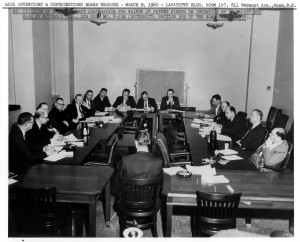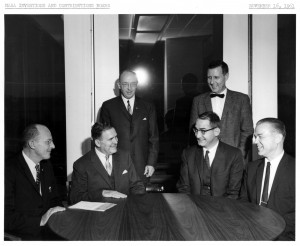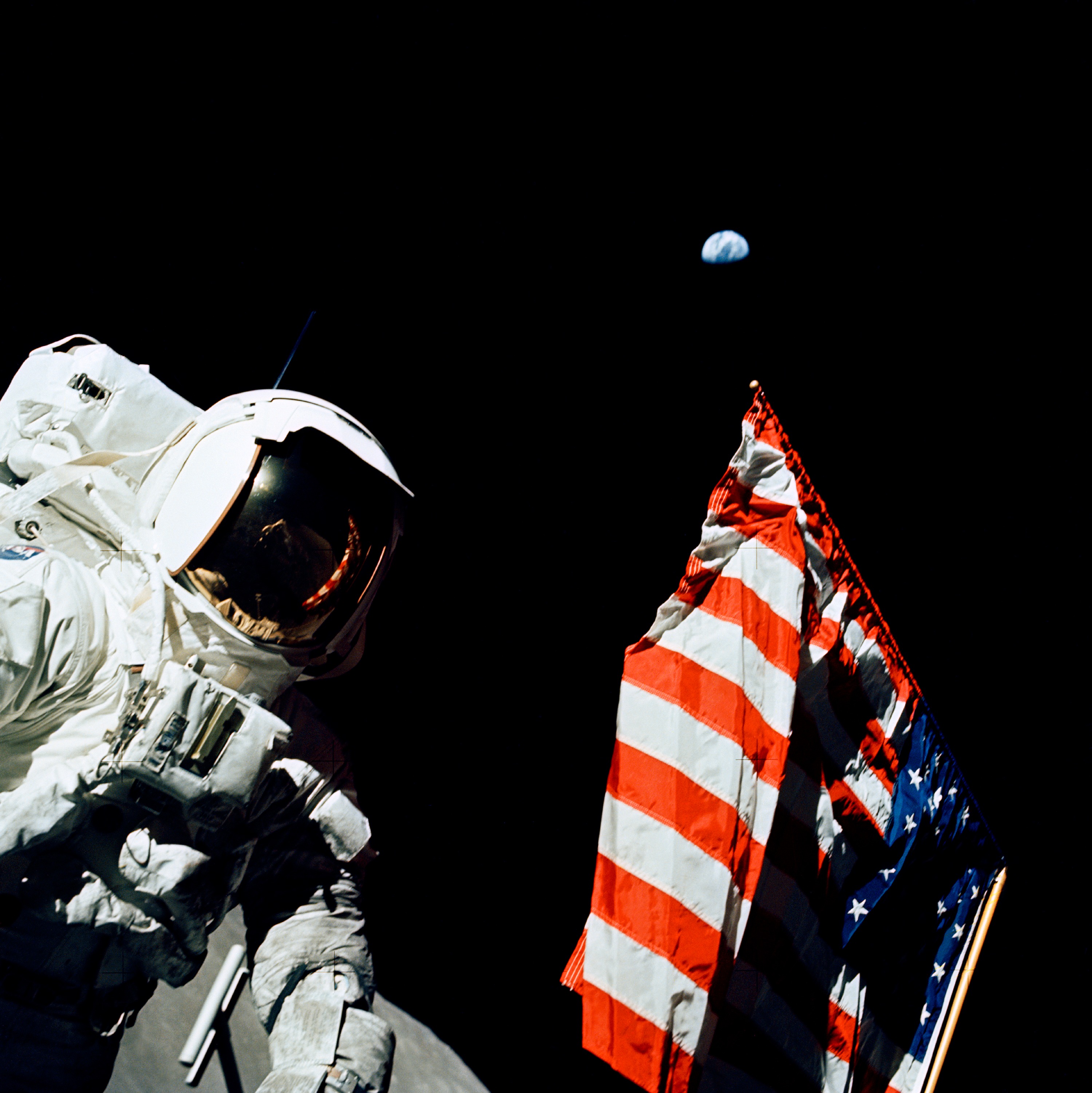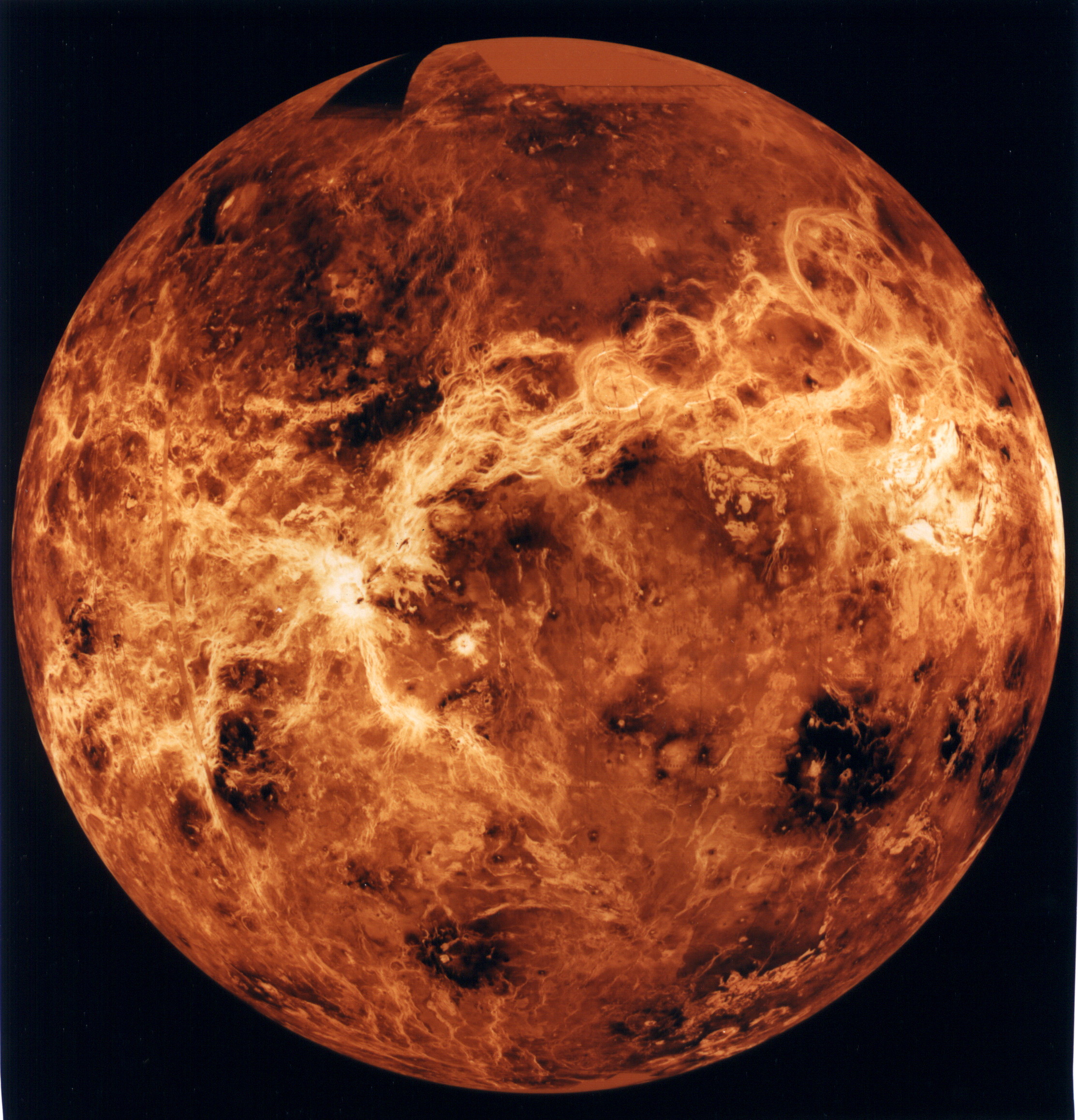
By Carol Anne Dunn
Outside NASA’s scientific community, NASA’s Inventions and Contributions Board (ICB) and its Space Act Awards Program are practically unknown, yet its history is a microcosm of NASA’s history, and it has been an important factor in NASA’s extensive technological achievements.

The NASA Inventions and Contributions Board convenes in March 1960 to discuss a petition of Bell Aircraft Corporation for a waiver of patent rights on the invention of the “catalyst bed.”
Photo Credit: NASA
The Board was formed to review waivers of title to inventions by NASA contractors and to award money for scientific and technical contributions that are of significant value in conducting aeronautical and space activities. Created by the original Space Act of 1958, the Board itself was a visionary, innovative, and historical concept that has continually chronicled NASA’s challenges and innovations.
The Board’s inception was visionary because there was little precedent. A forward-looking Congress recognized that if NASA was to achieve one of its chartered purposes—“the preservation of the role of the United States as a leader in aeronautical and space science and technology”—then incentives must be given to the new agency’s scientists, engineers, and technologists to create and invent technologies that would be needed by the fledgling space program. Today, these contributors are honored with awards for innovations that have been reported in NASA Tech Briefs, software that has been approved by NASA for release to qualified users, and inventions that have received approval for patent applications by NASA under the Space Act.
NASA epitomizes the spirit of innovation through the imagination of its scientific and engineering communities. In the latest ICB annual report, we highlight the Robot Cable- Compliant Device developed at Goddard Space Flight Center. Goddard featured this invention on its Tech Transfer Web site, stating that it provided customized structural response and mitigated shock and vibration damage. The center also lists a variety of applications in which the technology could be used. One of those applications, developed by Enduro, is a rehabilitative walker that enables patients to stand and move without the aid of a physical therapist. It is currently being used to help soldiers and others at the Walter Reed Medical Center in Washington, D.C.
The device is also being used in the NASA Space Technology 5 (ST5) mission. ST5 consists of three 25 kg satellites orbiting the earth together to measure the magnetosphere and demonstrate miniaturized technology. Each spacecraft has an umbilical separation connector that indicates when the spacecraft is fully released from the rocket. The connector is positioned by a compliant mount, which possesses a high tolerance for misalignment, and allows the spacecraft to separate smoothly. The compliant mount is an alternate embodiment of the Robot Cable-Compliance Device technology. This is one example of how a NASA technology can be developed into many useful applications. The Tech Transfer Office’s coordination with ICB helps publicize these inventions, enabling others outside the Agency to help brainstorm the many ways one widget could be used.
Through the years, awards to scientists and engineers have consistently increased in monetary value. The largest award of the sixties was to Francis Regallo of Langley Research Center: $35,000 for a flexible wing (kite). In the seventies it was Richard T. Whitcomb, another Langley employee, who received $25,000 for the Airfoil Shape for Flight. In 2005, Kennedy Space Center employees in conjunction with the University of Florida received $73,000—the largest award for Invention of the Year in the history of the Board—for Zero-Valent Metal Emulsion for Reductive Dehalogenation of DNAPL-Phase Environmental Contaminants, an environmental clean-up technology.
By increasing the awards, the ICB motivates inventors to make their inventions known to a broader audience. NASA technologies that might have otherwise remained behind closed doors are more readily available to industry and other NASA Centers for future creative applications. This broader dissemination and publication of winning inventions by the ICB helps communicate what’s available inside NASA and helps keep innovation between centers and with communities outside the Agency active.
Through the activities of the ICB, each of NASA’s ten centers has contributed to NASA’s impressive roster of technological achievements. The first Board, convened on December 4, 1958, had 250 cases awaiting review, and during its first year of existence, requests for awards arrived at the rate of 100 per month. On May 9, 1960, T. Keith Glennan, NASA’s first administrator, noted, “Directly following lunch we had a briefing by the Inventions and Contributions Board. Those poor devils had to review 2,000 proposals arising out of supposed inventions and contributions.” Today’s Board comprises twentytwo members and is chaired by the NASA Chief Engineer. The NASA Administrator selects its members, and they serve for a minimum of three years.
In addition to recognizing NASA’s innovative scientists, engineers, and technologists, the Board has produced a detailed record of NASA’s technological achievements throughout the years. These technologies continue to have a tremendous effect on the U.S. economy. The 2003 ICB annual report estimated that the extraordinary impact of just a few of these inventions on the U.S. economy and world commerce was more than $200 billion, and the aggregate of all 98,000 awards that the Board has granted throughout its fifty-year existence is conservatively estimated to have contributed more than half a trillion dollars in wealth to the economy and enabled technology that will change how we work and live. More importantly, the Board recognizes NASA’s finest technical talent, whose expertise covers more than forty fields of science and technology, and makes them more readily available to the public.
For a complete list of winning technologies, visit the ICB Web site at http://icb.nasa.gov.
About the Author
 |
Carol Anne Dunn currently works as a project specialist in the Technology Transfer Office at Kennedy Space Center. She is also the awards liaison officer for the Inventions and Contributions Board |








